The big day had arrived. We were leaving The Bahamas and setting sail to Puerto Rico, then on to the Eastern Caribbean. We’ve been sailing full-time for over a year now, have gained a great deal of experience, gone through many shakedown cruises, and honed our skills. This has prepared us for our biggest and most challenging passage yet.
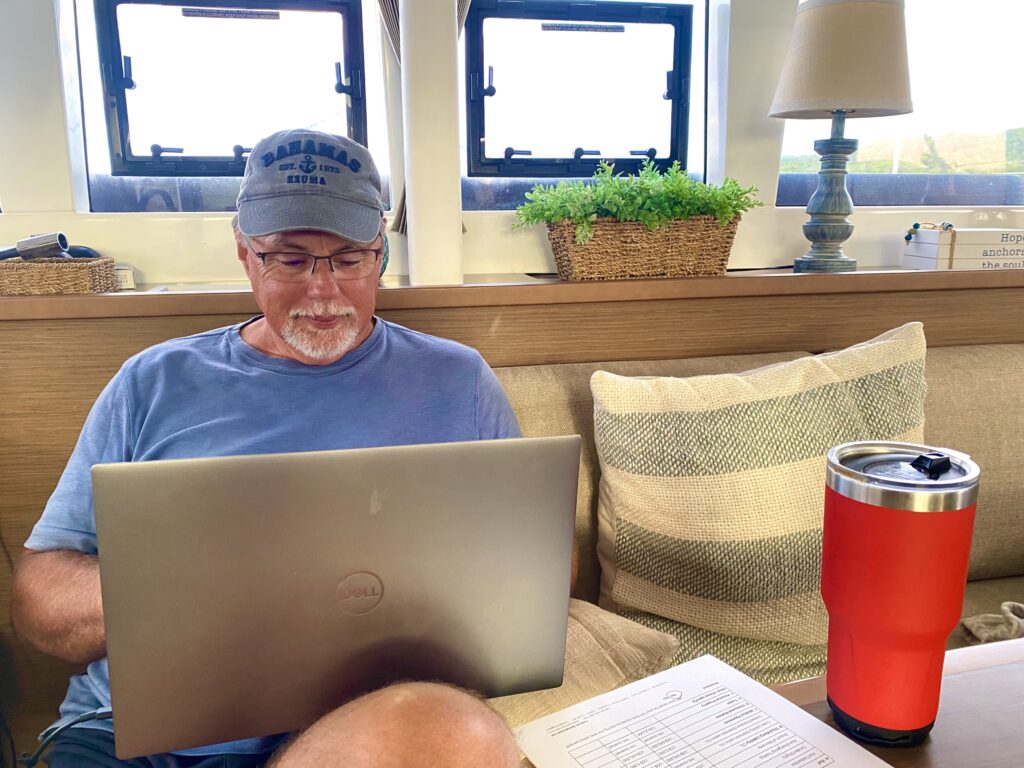
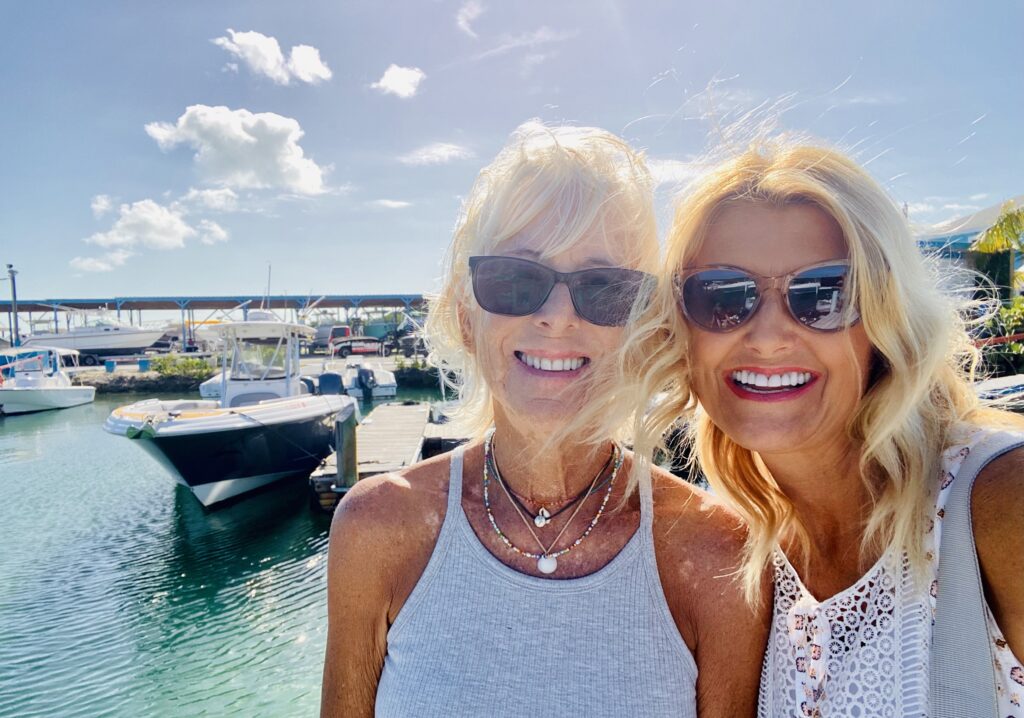
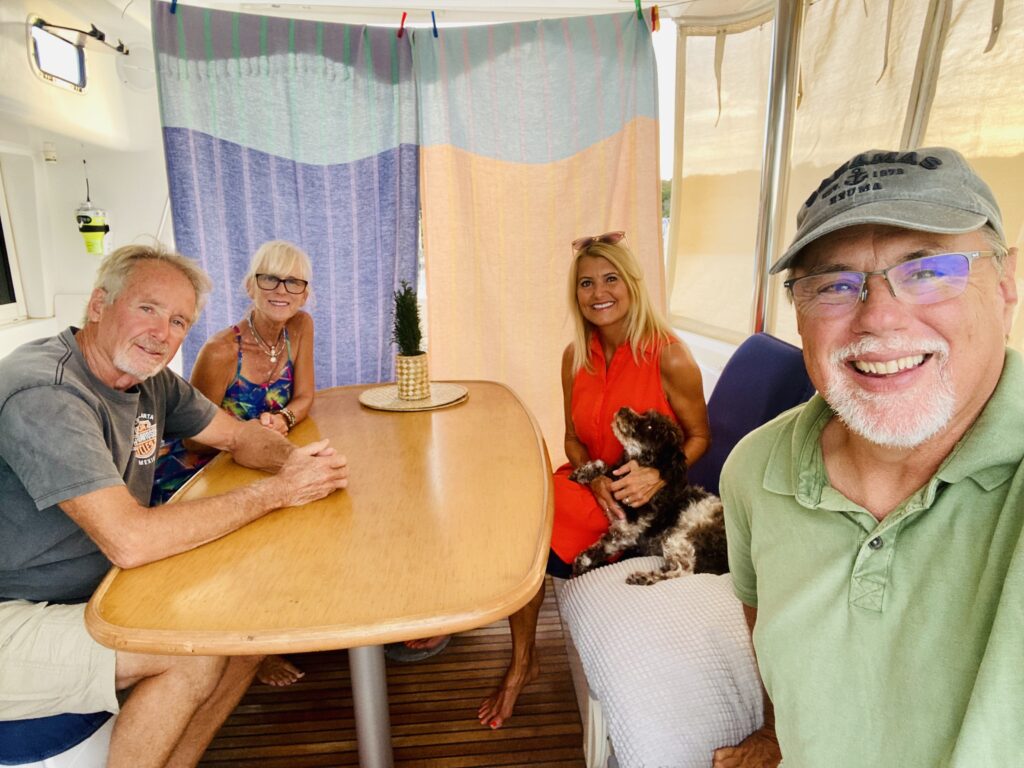
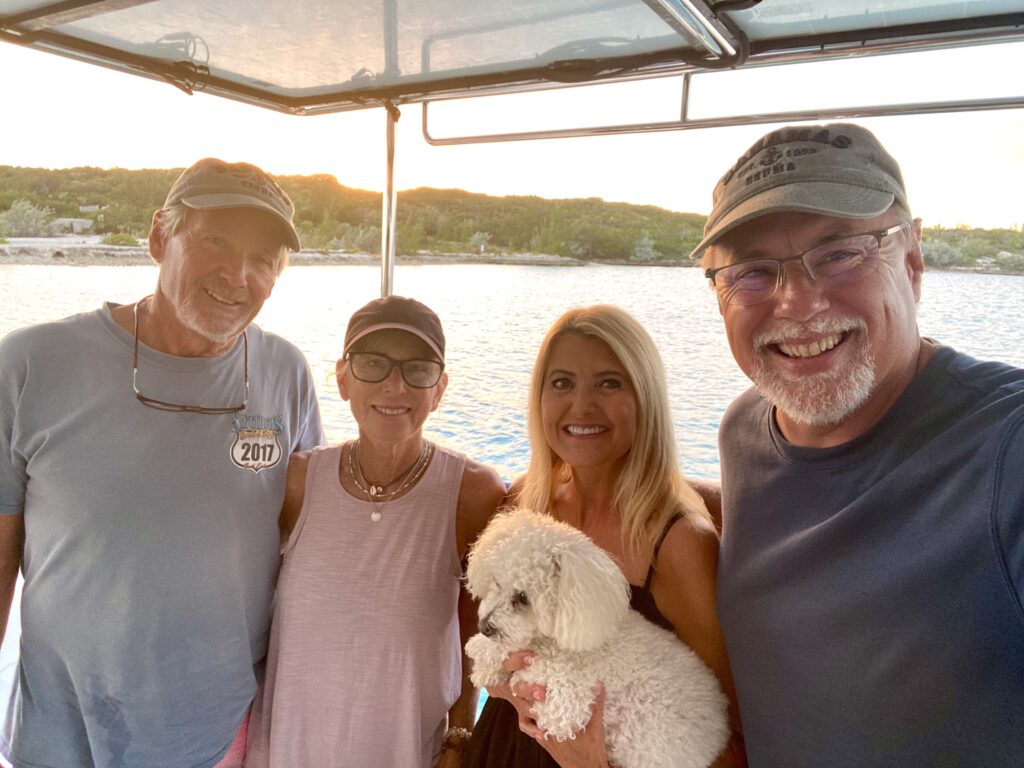
Day 1, Sun., Jan. 28, 2024
We left George Town in The Exumas at 7:00am with our buddy boat, Mana Kai. We knew the first day wasn’t going to be comfortable, and it certainly wasn’t, but we’ve been through worse. For the entire day and evening, the winds were coming from the Southeast, which caused us to get somewhat of a beating as we pounded into the 2-6 foot waves for well over 24 hours. We were able to sail on a close haul with engines off for much of the day, cruising along at 7+ knots, so that was good, and sped us right along.
Our original route had us hugging the coast of the Turks & Caicos quite closely, but we and our buddy boat made the decision to head farther east the first day to get ahead of a cold front that was making its way through The Bahamas and Turks & Caicos. Once the cold front passed, the winds were going to be coming from the northwest, then north, so we wanted to get farther east as quickly as possible so when we made the turn to go south to Puerto Rico, we would have the wind and the waves behind us. This always makes for a much more comfortable ride.
Chris Parker, with Marine Weather Center, helped us determine that this was a great weather window to head southeast. It’s not common to get a northerly wind for three days in a row pushing vessels into Puerto Rico, so we knew this was a great opportunity to go. The only downside was that we would have a rough first day or so as the cold front passed and as the winds took time to veer.
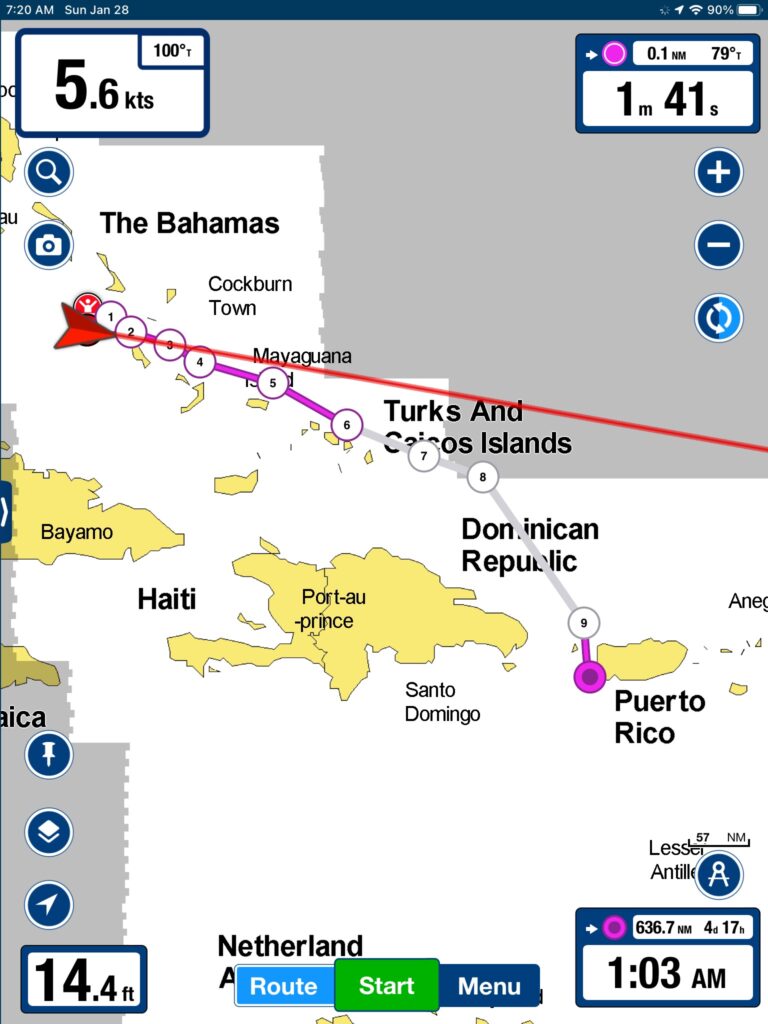
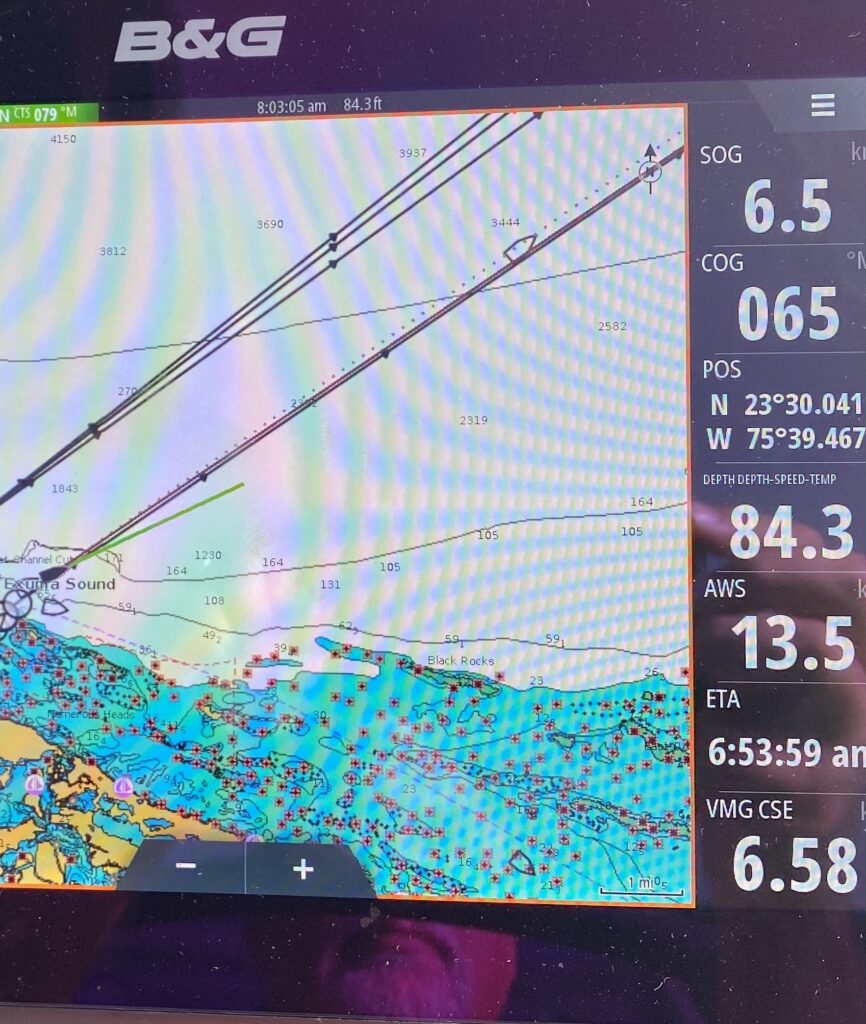
Even though we were pounding into the waves, we had a beautiful first day with warm weather and lots of sun. However, just before sunset, we saw squalls in the distance. We checked our radar, and determined that they were in our path, so we slightly altered course to get out from under them. We also took down our sails, rather than reef them, because nightfall was upon us and we didn’t want to have to worry about reefing the sails in the night if the winds were to pick up, or if we were to encounter more squalls. Plus, the seas were rough all night and bringing in the sails just made us more at ease. No one wants to go on deck in the middle of the night with 5-foot swells to fix a problem.
One thing I know for sure is that God really intervened in stirring us to bring down the sails. When we dropped the main sail and were getting ready to secure the halyard, Kory noticed a 4-inch section on the halyard that had chafed quite badly and eventually would have broken. If this were to have happened, the main sail would have either come crashing down or it would have gotten stuck and been difficult to manually get down. Either way would not have been disastrous, but it could have caused damage. Our sail could have ripped, the sail might have hit the hard top instead of resting in the boom bag, or it might have luffed in the wind and become a challenge to maneuver. I’m so grateful that God helped us see this problem and be able to rectify it.
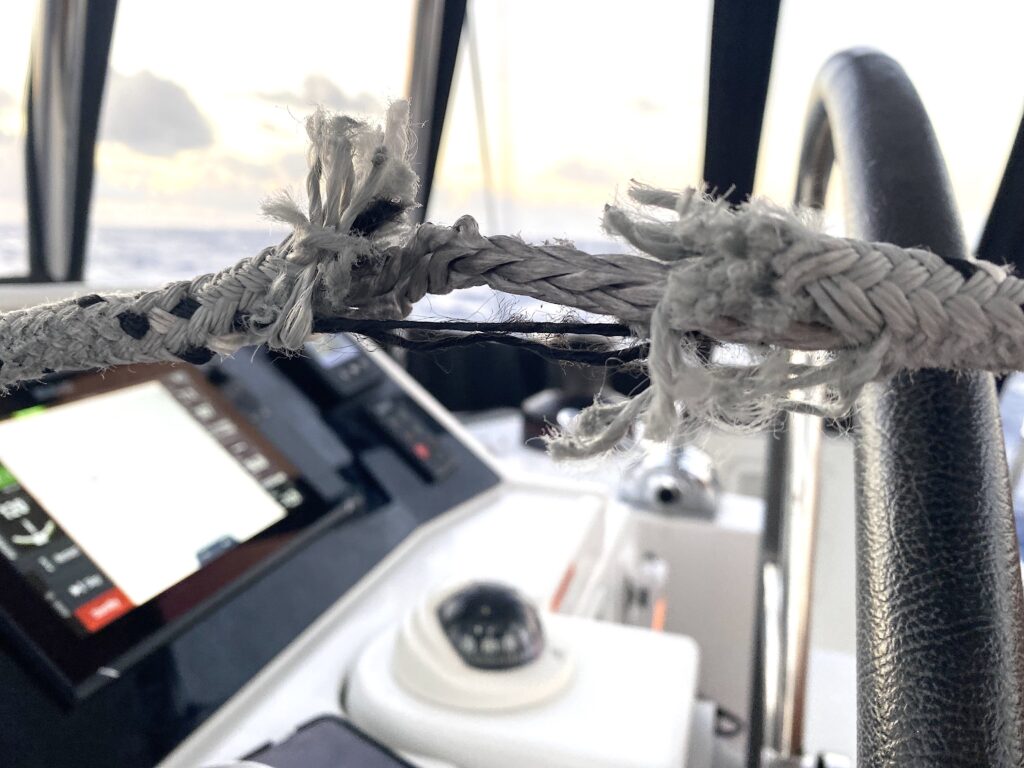
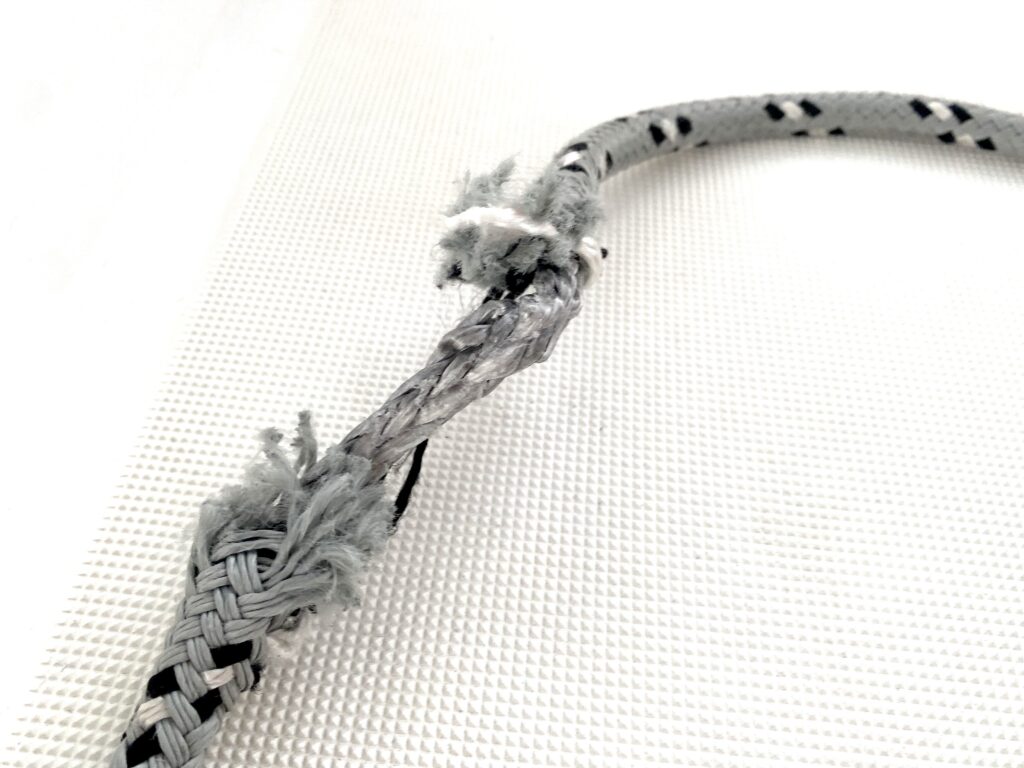
The following day, Kory was able to cut out the chafed part of the halyard and re-string the line. Thankfully, the chafed section was near the bitter end so we didn’t waste much line in cutting this part out. Even though Kory fixed the halyard, we decided not to use the main sail the rest of the trip because we didn’t want the halyard to chafe again and have the same problem. Kory was pretty sure he knew where it was chafing, at the top of the mast, and it wasn’t something we could fix while underway. So, for the remainder of the passage, we resorted to using the Genoa and the Screecher. Unfortunately, this meant that we’d have to motor more. Thankfully our fuel capacity is 264 gallons which is enough to motor for 1,131 miles, 188.5 hours, or 7.85 days, using only one engine going 6 knots. And, we had another 15 gallons of diesel in Jerry cans as a backup.
We broke up our night watches into three-hour shifts starting from 6:30pm-6:30am. That schedule works well for us. We had almost a full moon all night, so it was comforting to be able to see the moon’s reflection on the water and give us just enough light to see the seas and the horizon. This was one of the many pros of leaving The Bahamas when we did. We would have the moon lighting our path the whole way to Puerto Rico.
Day 2, Mon., Jan. 29, 2024
I was on watch from 3:30-6:30am. There was no traffic this far in the Atlantic, except for one massive Princess Cruise ship about five miles away, also heading to Puerto Rico. The sunrise was beautiful, and I was comforted by observing the break of dawn, when the darkness of night is overshadowed by the sun. I’m grateful every time we make it safely through the night to see another beautiful day.
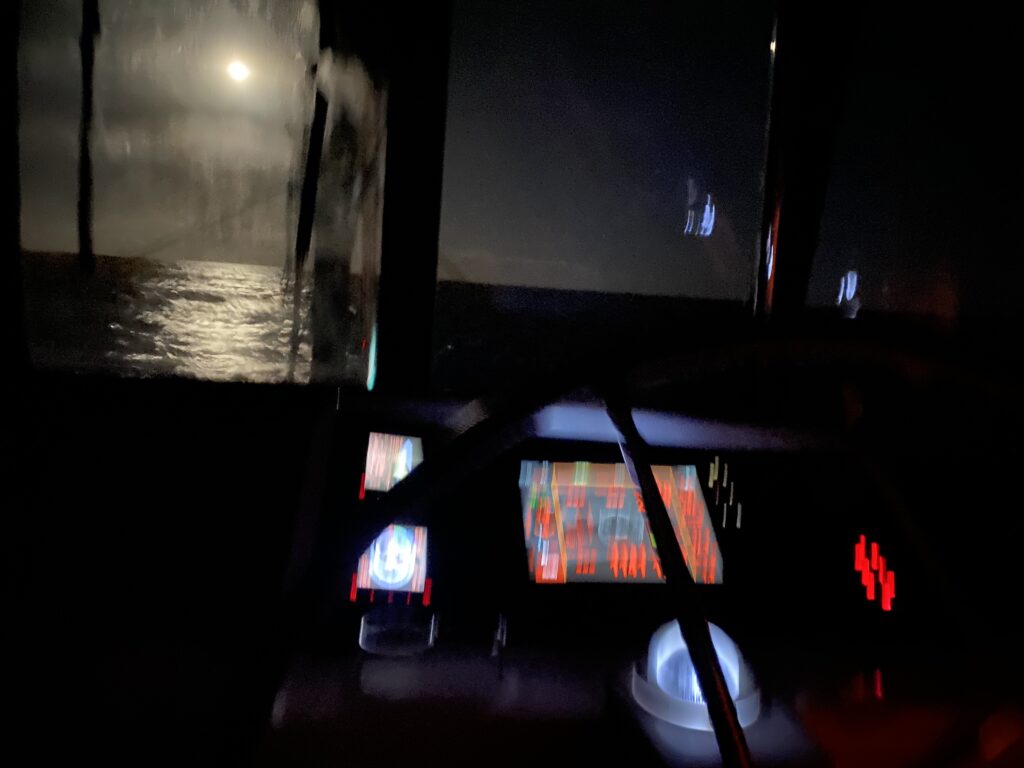

Unfortunately, Kory wasn’t feeling too well the second day due to the rocking, rolling, and pitching of the boat over the swells. He took a couple of naps to shake it off, but that seasick feeling stuck with him much of the day and evening. Thankfully, I was feeling fine. It would be awful if both of us were sick at the same time. I was happy to have Kory sleep. I spent time writing in my blog, doing a Bible study, listening to an audio book, and monitoring the charts. When it’s this rolly, you don’t really want to do much of anything.
We had warm, sunny weather almost the whole day, other than a squall we passed through late afternoon. It lasted about five minutes with rain and 28 knot winds, then it cleared up quickly and was sunny again.
The good news is that by early evening, the wind, as predicted, had veered from the south to the west, and then to the north, which put the wind and seas behind us, giving us a much more comfortable ride. We were still surfing over 6-7 foot swells all night, but it was much more comfortable than the night before since the wind was almost behind us now. The swells should start flattening throughout the rest of the passage since the cold front is gone. Our boat surfs the waves amazingly well, as it is designed to do. We fluctuated from 6.5 to 9.5 knots, and were making good headway as we passed Mayaguana in the night.
Day 3, Tues., Jan. 30, 2024
It was exciting to watch the sunrise again and to know that we completed two full days of our passage. We were joyful as we recounted the journey thus far, realizing that the hard part was out of the way. The wind started to die down from 25 knots to 15-20 knots as was predicted, but the seas were still taking a while to settle down. We’ll have to wait a while longer to get calmer seas.
We motored quite a bit today on one engine while the wind was directly behind us. Once the winds shifted from the north to the northeast, we were able to fly the head sail for a few hours with one engine running to give us an added push. Then by mid-afternoon, we were able to unfurl the screecher and sail with engines off for several hours as the wind clocked further northeast and gave us a nice broad reach sail at an average speed of 7.5 knots.
We tried to hail our buddy boat on Channel 16 and 14 (our designated channel for communicating with them), but we couldn’t reach them, nor could we see their boat on AIS. After doing some research, Kory determined that our VHF antenna at the top of the mast was the culprit, as he knew the VHF and AIS use the same antenna on our boat. We think the squalls from Monday night yanked it loose from it’s connection, but it’s likely that birds had already loosened it prior to our passage. We learned a good lesson: go up the mast before a major passage and make sure everything is tight and secure.
It’s certainly not ideal to lose VHF or AIS in the middle of the ocean. That’s when we were most thankful that we have Starlink which allows us to communicate with others via our phones. We sent a message to our buddy boat to let them know about our VHF problem, and for the rest of the trip communicated with them via WhatsApp to keep each other up-to-date on our progress. Craig and Bobbi on Mana Kai, a 42-foot catamaran, trailed behind us the whole trip. It was nice to know they were in the distance, with several other boats following as well.
If for any reason we were to have lost all communication, even through Starlink’s global service, our vessel has an EPIRB, an Emergency Position Indicating Radio Beacon. This is a small radio transmitter which will send a distress message from our vessel’s main transmitter. Once the EPIRB is released and/or it is exposed to water, it automatically activates. There is a lot of communication redundancy on our boat, for which we are most thankful!
When we get to Puerto Rico one of the first orders of business will be to hoist Kory up the mast to see if he can repair the antenna. And Craig, on our buddy boat, Mana Kai, suggested that both of our boats hire someone to install a 2nd antenna at the top of our masts, eliminating the need to use a splitter. This is an excellent idea, and one we will likely do. That way we’ll have VHF running on one antenna and AIS on to the other. Redundancy is important, especially when it comes to communication and safety.
At 7pm Tuesday night, we officially hit the halfway point and were sure glad about that. It really hasn’t been bad. In fact, today was a pretty enjoyable day. We were both feeling well, able to sail, and making good headway. Our night watches were pretty uneventful, except for the brilliant display of stars which left us in awe of our Creator. The wind had died down to 12-15 knots and the swells lessened to around 4 feet instead of 6-8 feet like we had the prior night. We were so thankful that the seas were calming down.
Day 4, Wed., Jan. 31, 2024
At 7am this morning, we officially hit the three-day, or 72 hour mark! We’re counting down the hours now. We have 1-1/2 more days and one night left to go. We anticipate arriving at an anchorage in Puerto Rico Thursday afternoon.
The seas flattened a lot and we had a very smooth motor-sailing day. The wind and waves were mostly behind us and the two-foot swells were about six seconds apart, so we had a pretty comfortable ride. It got a little bouncy at times, but this was great compared to the first two days.
We took turns sleeping during the day to make up for the lack of restful sleep at night. Both of us were feeling great and had gotten into a routine. However, I think a four-day, four-night passage is about long enough for me. I’m not sure if I’d want to do the I-65 route and be at sea for 7-9 days, but you never know. It really all depends on the weather and the sea state.
We caught a barracuda today, but we let it go. We’re not particularly interested in eating barracuda as we’ve heard they don’t taste the best, and because they can harbor ciguatera poisoning. This is a food-borne illness caused by eating certain tropical reef fish which have accumulated a naturally occurring toxin or poison called ciguatoxin. The fish get this toxin by eating small plants on and around coral reefs that naturally produce ciguatoxins. Mahi and Tuna don’t get ciguatera and we were hoping to catch a few of those on our trip, but not this time.
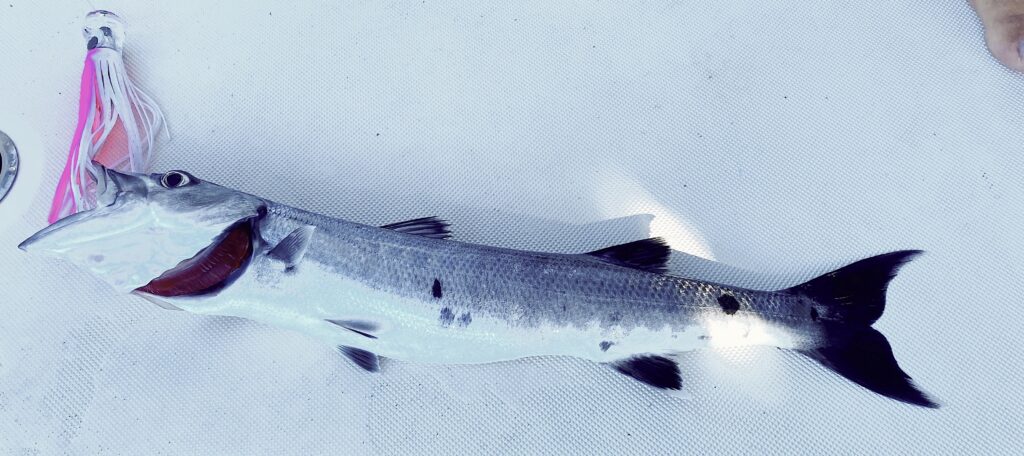
However, we almost had the monster of a catch. Kory and I were sitting at the helm station and heard the squealing sound of our fishing line being yanked out of the reel. We rushed to grab the pole, as we watched the bend in the rod getting greater and greater. By the time Kory got to the pole, the last of the line had been pulled out of the reel and it snapped off completely, accompanied by a loud crack. We lost our brand new lure and all of our line, but thankfully our pole was in-tact. Whatever it was, it was huge! We imagined a Marlin, or maybe a Giant Sea Bass.
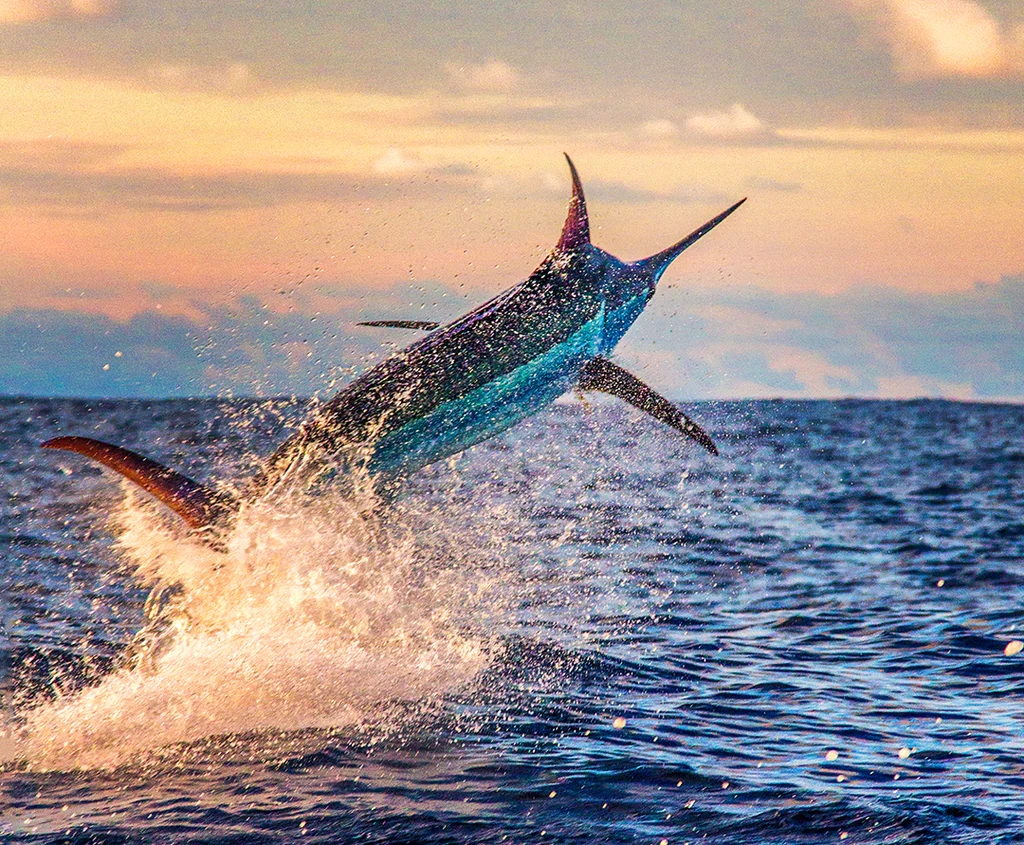
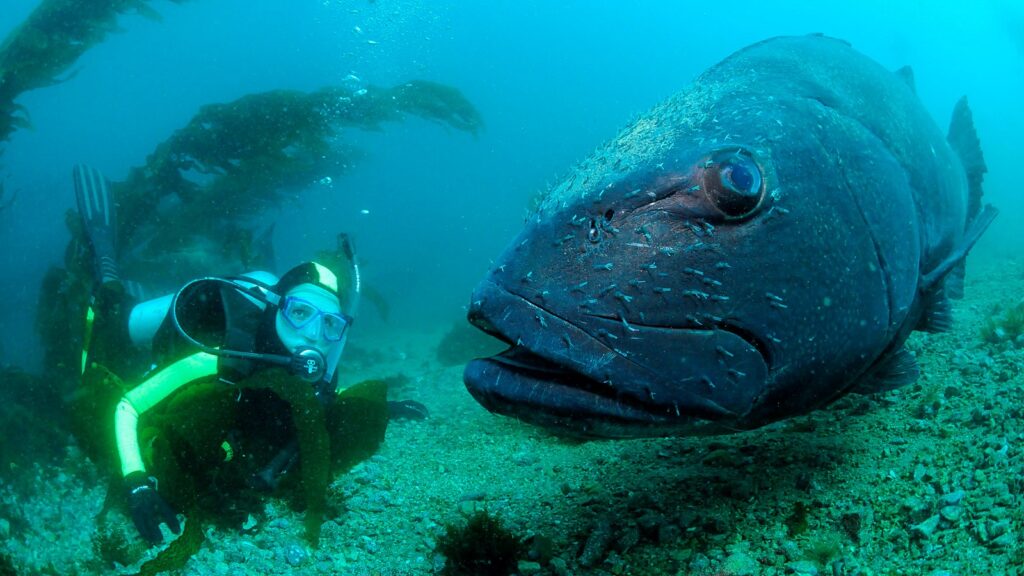
We enjoyed a calm day at sea and began crossing the Puerto Rico Trench around 2am. The Puerto Rico Trench is a long, deep depression in the ocean floor, and the deepest part of the Atlantic Ocean. The trench is 497 miles long and has a maximum depth of 27,480 feet (8,376 metres) or 5.20 miles. The deepest known point on the Earth’s surface is the Mariana Trench — a chasm in the western Pacific Ocean that spans more than 1,580 miles, and plunges to depths more than 36,000 feet (about 11,000 meters) underwater. While the Puerto Rico Trench isn’t the deepest in the world, it does rank as the eighth deepest, and was quite an amazing natural wonder to be passing over.
As we were exiting the Puerto Rico Trench the waters became more and more unsettled. As the deep ocean current collides with the rising terrain, it makes for choppy surface conditions. We experienced this unstable sea state for about two hours, and then everything settled down the moment we passed the southern edge of The Trench. What an experience!
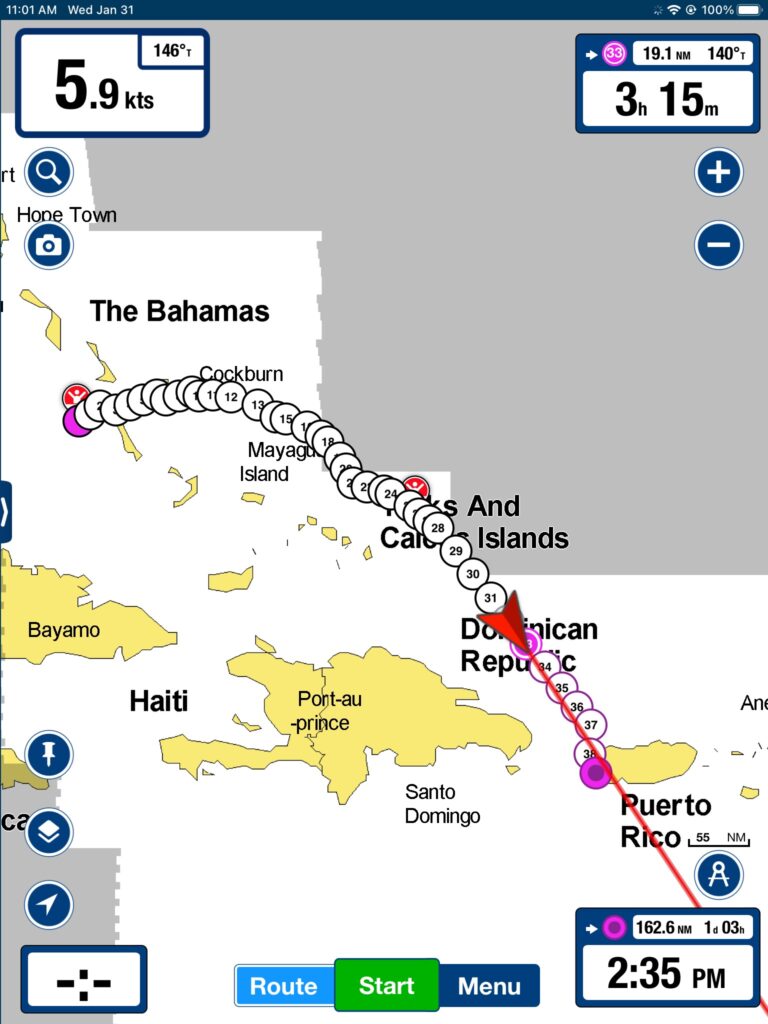
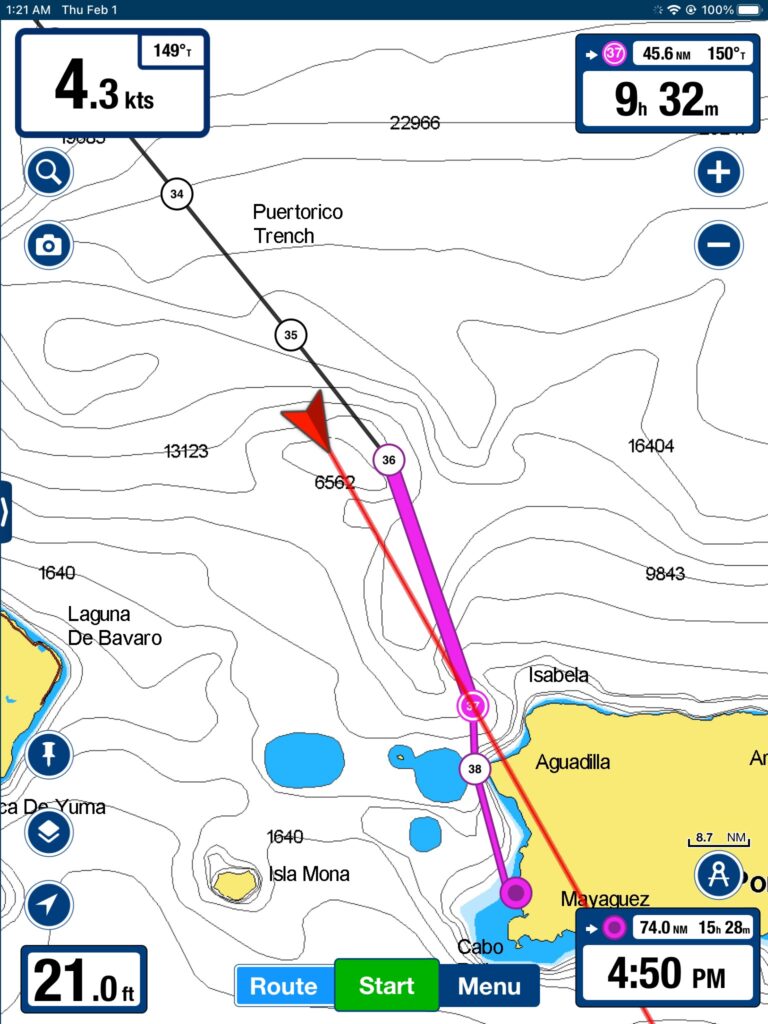
Kory and I stayed up together most of our last night, especially as we motored over the Puerto Rico Trench in the wee morning hours. As soon as we passed over the deepest contour lines, and the waters started to settle around 4am, the seas became like glass. Neither one of us could sleep with so much excitement! We were almost there!
Day 5, Thurs., Feb. 1, 2024
It was surreal to ponder that we had already gone through four days and four nights and were in the final countdown of our passage. We had a little over a half a day left. For the entire day, the ocean was like a swimming pool, with flat, glassy seas, a rich royal blue color, and a clarity that allowed us to see our reflections in the water. It was unbelievably stunning!
It’s moments like this that make the rough days worth it all. Very few people get a chance to experience this kind of extraordinary splendor. It made me think of eternity with the Lord. We will have trials, sufferings, testings, and troubles in this life, but when we are with the Lord in eternity, we will see the full glory of His splendor and be in awe of His beauty and perfection, and everything we’ve gone through in this life will be worth it all!
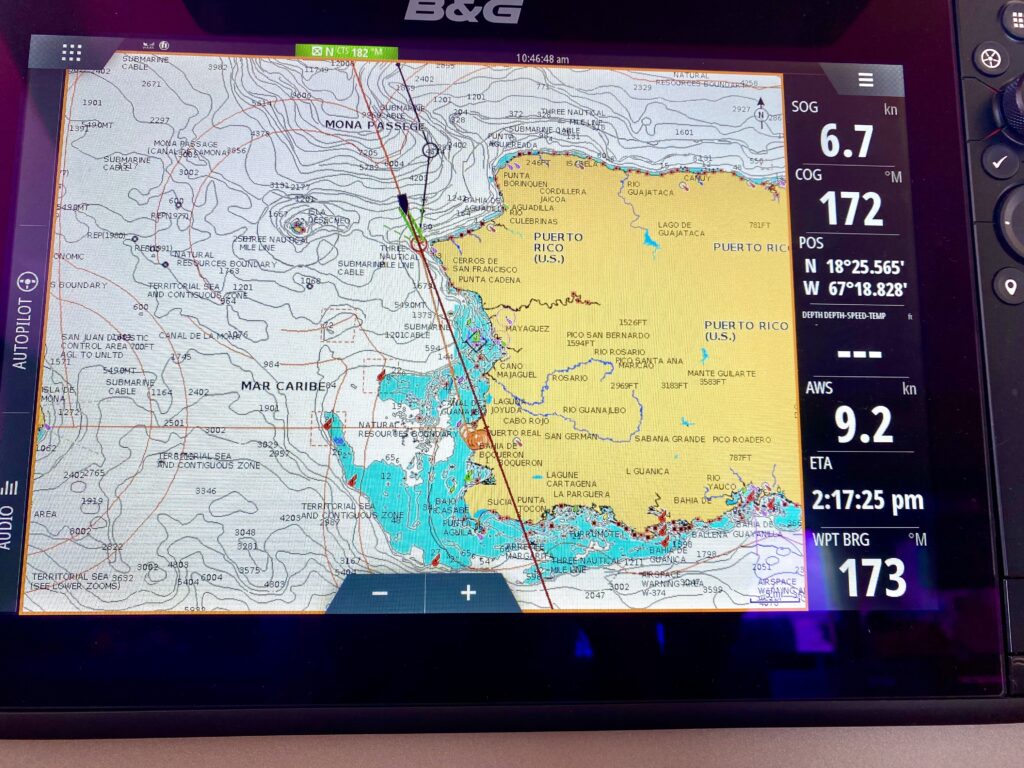
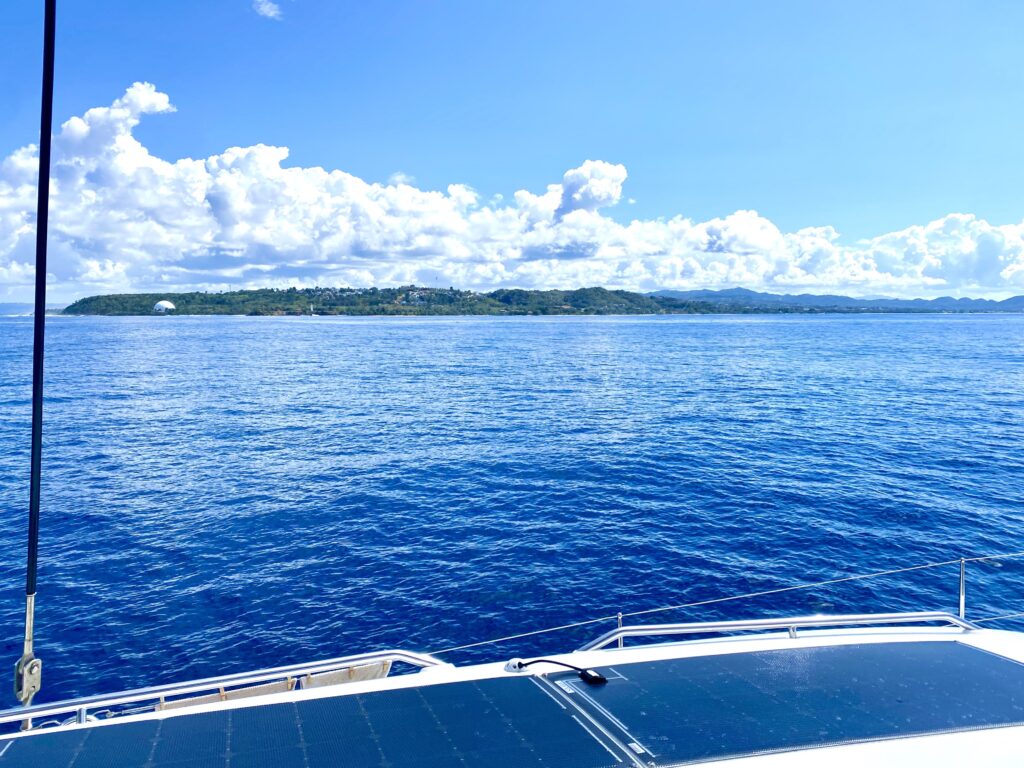
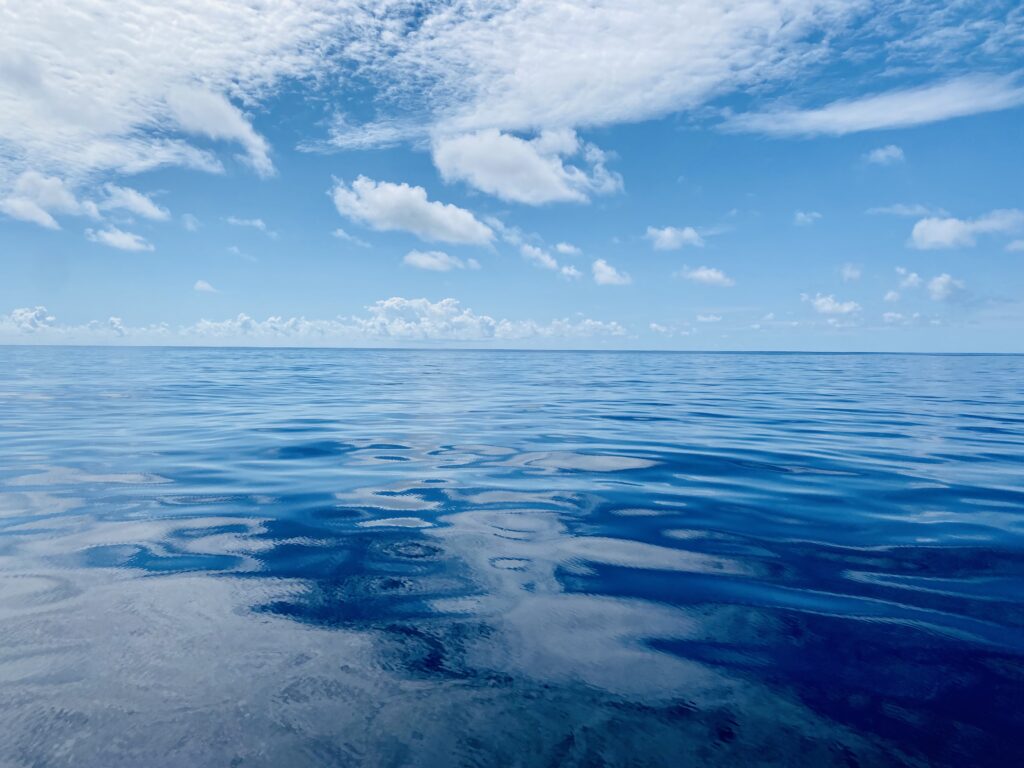
It’s so exciting to yell “Land ho!” at the first sight of solid ground. Kory and I jumped for joy when we realized we were at the end of this journey, and just beginning a new one. We thanked the Lord for the safety He provided, and for the opportunities of this new day.
Our total passage was 4 days, 5 hours, or 101 total hours at sea, from Sunday, Jan. 28th at 7am, to Thursday, Feb. 1st at 12:00pm. We traveled 668 miles at an average speed of 6.61 knots. What a feat! And what potential lies ahead!
“God is our refuge and strength, a very present help in trouble. Therefore we will not fear, even though the earth be removed, and though the mountains be carried into the midst of the sea; though its waters roar and be troubled, though the mountains shake with its swelling. Selah.”
Psalm 46:1-3
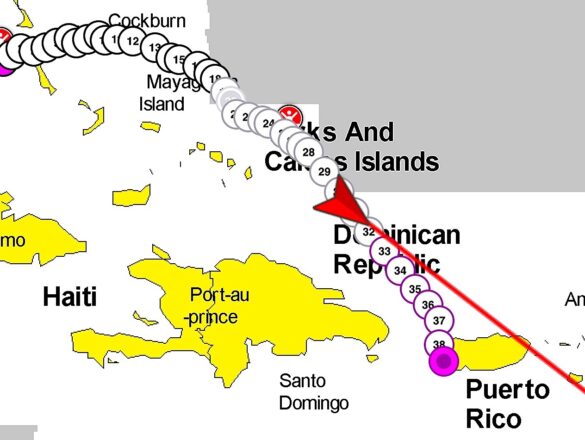
Thank you for sharing these details. I feel like I’m right there with you. Great job on the overnight shifts. I’m surprised Kory got seasick! I’ll have to give him a hard time about that. Praise the Lord you didn’t get it too! I can’t wait to read about the shorelines of P.R.!
If you do any shore excursions, do tell us about them!
lots of love.